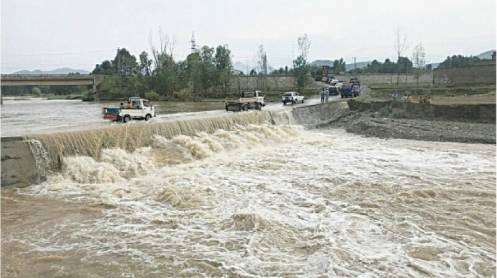ISLAMABAD: Pakistan is expected to experience one of its coldest winters in decades, driven by the ongoing La Niña climate pattern, according to a recent situation report by the Intersector Coordination Group in collaboration with partners, under the UN Office for the Coordination of Humanitarian Affairs (OCHA).
The report warns that the colder-than-usual conditions could further strain the coping capacity of flood-affected households—particularly in the mountainous regions of Khyber Pakhtunkhwa (KP) and Gilgit-Baltistan (GB)—as they continue to recover from this year’s devastating monsoon floods.
La Niña, which occurs when sea surface temperatures in the Pacific Ocean cool abnormally, often triggers extreme weather changes across the globe.
According to OCHA’s October forecast, marginally negative phases of both the El Niño–Southern Oscillation and the Indian Ocean Dipole are likely to influence rainfall patterns across Pakistan. Northern Punjab, KP, Azad Jammu and Kashmir (AJK), and GB may experience below-normal rainfall, while Sindh, Balochistan, and southern Punjab are expected to see near-normal precipitation.
The report highlights several possible consequences of these climatic shifts, including:
- Disruptions to Kharif crop harvesting due to isolated storms;
- Increased risk of dengue outbreaks in areas with stagnant water;
- Greater likelihood of glacial lake outburst floods (GLOFs) in upper regions;
- Reduced river inflows impacting irrigation;
- Elevated smog and air pollution in plains; and
- Adverse impacts on livestock health and fodder availability.
Despite initial strong response efforts from both local and international actors, the report notes a “diminishing response capacity” as resources wane. Pre-positioned stocks and emergency funds have largely been exhausted, prompting humanitarian partners to seek additional funding for continued recovery and basic service provision.
Long-term livelihood recovery remains a major concern. The floods destroyed vast agricultural lands, livestock, and equipment, jeopardizing income generation for thousands of farming families. A geo-spatial impact assessment by the FAO found that around 1.2 million hectares of cropland—primarily in Punjab—were submerged, severely affecting rice, cotton, and sugarcane crops and overlapping with the critical Rabi planting season, deepening food insecurity risks.
Stagnant floodwaters in several regions continue to pose serious health threats, with rising cases of cholera, diarrhea, typhoid, malaria, and dengue.
Meanwhile, over 229,000 homes remain damaged or destroyed, forcing many families to sleep outdoors with minimal protection. Numerous schools and health facilities also remain unusable, covered in thick mud or stripped of essential supplies, hampering education and healthcare services.
The report underscores the urgent need for sustained humanitarian and recovery support to help affected communities withstand the approaching winter and rebuild their livelihoods.
Story by AMin Ahmed







